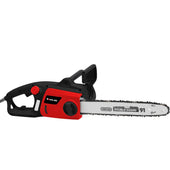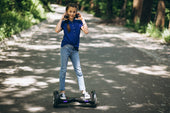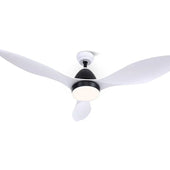Understanding the Psychological Impact of Space Organisation
Room dividers shape not just physical spaces but also influence mental well-being and emotional states. Spatial layout impacts how individuals perceive privacy, openness, and control over their environment. Dividers can foster a sense of security by carving out intimate zones within larger spaces, where people feel protected from external disturbances. They also help define function-specific areas, enabling clear mental associations tied to activities such as work, rest, or creativity.
Colours, materials, and designs further influence mood. By using soothing tones, textured finishes, or adjustable styles, dividers can evoke balance, reduce stress, and promote mindfulness. Organised spaces encourage mental clarity and enhanced focus during days.
What Are Room Dividers and Their Functional Benefits?
Room dividers are versatile design elements used to partition or define living spaces without the need for permanent walls. They come in various styles, including folding screens, curtains, shelving units, and sliding panels. These structures serve both aesthetic and functional purposes, making them a practical addition to any home environment.
Their benefits are multifaceted:
- Space Optimisation: They create distinct areas in open-plan homes, providing tailored functionality for work, relaxation, or dining.
- Privacy Enhancement: Dividers offer added seclusion in shared spaces without compromising the room’s openness.
- Aesthetic Appeal: Available in diverse materials and designs, they enhance decor while adding texture and depth to a space.
- Flexibility: They can be easily moved or adapted to suit evolving space requirements.
The Science Behind Room Dividers: Interaction of Space and Mind
Room dividers influence spatial perception and psychological behaviour by reshaping an environment’s physical layout. They alter the geometry of a room, creating boundaries that impact natural flow and organisation. This manipulation of space can promote mental clarity and reduce overstimulation, as compartmentalisation helps to declutter visual and cognitive surroundings.
Studies in environmental psychology show that configurable spaces support adaptive thinking, empowering individuals to personalise their surroundings. Additionally, dividing large open areas fosters a sense of security and privacy, crucial for emotional well-being. Using colours, textures, and materials in dividers further enhances mood, as distinct spaces evoke specific emotional associations effectively.
Room Dividers as Tools for Enhancing a Sense of Privacy
Room dividers serve as versatile tools to create private spaces without the permanence of walls. They are ideal for open floor plans, where privacy can be limited. By introducing a physical barrier, these dividers effectively delineate personal areas, fostering a sense of individual space within shared environments.
Options such as folding screens, fabric curtains, or bookshelves provide varying degrees of seclusion. Strategically placed, they block sightlines, reducing distractions and encouraging focus. For small flats, room dividers can transform multifunctional spaces, such as separating a sleeping area from a living room. Materials like frosted glass ensure privacy without compromising light.
Creating a Visual Flow: Using Dividers for Spatial Harmony
Room dividers play a pivotal role in establishing spatial harmony by guiding visual flow within an interior space. They allow individuals to segment areas while maintaining an open feel. By strategically placing dividers, transitions between functional zones, such as a living area and dining space, become seamless.
How Dividers Enhance Flow
- Definitive Boundaries: Dividers create structured sections without overwhelming the space.
- Texture Contrast: Incorporating materials like glass, wood, or fabric adds depth and visual interest.
- Colour Unity: Coordinating divider tones with surrounding elements ensures cohesive aesthetics.
Optimal placement considers lighting and furniture arrangements, enabling a balanced atmosphere. Through mindful design, dividers enhance spatial coherence and merge practicality with artistic appeal.
Colour Psychology in Room Dividers and How It Influences Mood
Colour plays a significant role in shaping the ambiance and mood of a space. Room dividers can utilise colour psychology to create specific emotional responses. Warm colours like red, orange, and yellow evoke energy, passion, and optimism, making them ideal for lively environments such as living rooms. Cool tones like blue, green, and purple have calming effects, promoting relaxation and serenity, making them suitable for bedrooms or meditation areas. Neutral shades such as grey, beige, and white foster balance and simplicity, appealing to minimalist designs. Designers can strategically incorporate colours into room dividers to harmonise with the overall aesthetic and desired emotional atmosphere of a home.
Material Matters: Choosing the Right Divider for Emotional Balance
Selecting the ideal material for a room divider can profoundly influence the emotional atmosphere of the space. Natural materials like wood or bamboo evoke a sense of warmth and grounding, making them ideal for areas meant for relaxation. Fabric dividers lend softness and can create a serene environment, suitable for bedrooms or reading nooks. Glass, meanwhile, offers transparency and light, promoting openness and energy flow – a choice perfect for workspaces. Metal introduces a modern, industrial feel, which can energise creative spaces, while paper screens, like Shoji dividers, convey a minimalist aesthetic fostering calm. Balancing aesthetics and functionality will shape the desired emotional impact.
Room Dividers and Productivity: Activating Focus Through Design
Room dividers play a pivotal role in enhancing productivity by imparting structure to open spaces. Their strategic placement helps minimise distractions, enabling individuals to focus more effectively. By creating distinct work zones within larger areas, dividers promote mental separation between personal and professional tasks.
The choice of materials and design also impacts productivity. For example, using opaque dividers reduces visual clutter, while textured surfaces may soften acoustics to improve concentration.
Transitioning between various workspaces is made seamless with modular dividers or mobile partitions. These allow flexibility, empowering users to adapt environments based on immediate needs without disrupting routine workflows.
Flexible Living Spaces: Catering to Dynamic Lifestyles with Dividers
Room dividers provide a practical solution for adapting spaces to modern, multifaceted lifestyles. With open-plan living becoming increasingly popular, dividers enable distinct zones within a single room without permanent structural changes. They offer flexibility for creating areas such as home offices, reading nooks, or play zones for children.
Room dividers accommodate privacy when needed, while allowing the ability to open up the space effortlessly. Options include:
- Folding Screens: Portable and easy to reposition.
- Sliding Panels: Sleek and space-efficient.
- Shelf Dividers: Combine storage with separation.
Using materials such as frosted glass or natural wood can enhance the divider’s functionality while aligning with the home’s aesthetics.
Integrating Room Dividers into Various Design Styles
Room dividers can seamlessly enhance diverse interior aesthetics, offering both functionality and flair. For modern spaces, sleek metal or glass partitions provide a minimalist feel, maintaining open sightlines while defining areas. Bohemian designs benefit from woven or macramé dividers that introduce texture and warmth, blending natural fibres with vibrant colours. In industrial interiors, faux brick walls or steel-framed dividers evoke raw, edgy sophistication that complements exposed piping and concrete floors. Traditional homes often favour wooden screens with intricate carvings, adding elegance and timeless beauty. Lastly, Scandinavian styles thrive with light, airy dividers made from natural wood or fabric for an understated, cosy atmosphere. Transitioning styles is effortless with versatile, modular options.
Achieving Zen: Room Dividers for Calm and Serenity
Room dividers can serve as pivotal elements in creating a tranquil and harmonious living environment. They enable the segmentation of space without compromising the overall flow, fostering an atmosphere conducive to relaxation and mindfulness. Materials such as bamboo, rattan, or frosted glass are ideal for invoking a sense of calm, as their organic textures enhance natural aesthetics.
Neutral colours, like beige, grey, or light wood tones, complement the dividers to exude warmth and serenity. Strategically placed dividers can help reduce visual clutter by containing specific functional areas, supporting mental clarity. Decorating with minimalistic accents further reinforces the quiet and peaceful surroundings.
Practical Tips for Choosing and Placing Room Dividers Effectively
Choosing and positioning room dividers requires careful consideration to achieve both functionality and aesthetic appeal. Understanding the needs of the space is crucial. To start, individuals should measure the area where the divider will be placed to ensure an appropriate size is selected. Oversized dividers can overwhelm a room, while undersized options may fail to define the intended boundary.
Tips when selecting room dividers:
- Material selection: Opt for sturdy materials like wood or metal in high-traffic areas, and lighter options like fabric or bamboo for flexibility.
- Transparency levels: Semi-transparent dividers, such as frosted glass, strike a balance between privacy and openness.
- Design integration: Choose colours and patterns that complement the room’s existing decor to maintain cohesiveness.
Placement tips for optimal effectiveness:
- Position dividers perpendicular to natural light sources to manage light flow without causing excessive shadowing.
- Use dividers strategically to delineate functional zones, such as separating a workspace from a leisure area.
Strategic choices maximise both utility and decor harmony.
Case Studies: Success Stories of Room Divider Transformations
Homeowners have utilised room dividers to craft tailored environments, demonstrating versatile benefits in diverse settings.
- Modern Studio Apartment: A city-dweller used frosted glass panels to separate the sleeping area from the living room. This enhanced privacy while maintaining natural light flow.
- Elegant Open-Plan Flat: A couple integrated wooden slatted dividers, blending functionality with decor—aiding in defining dining and lounging spaces seamlessly.
- Child-Friendly Living Space: Parents employed sturdy bookcase dividers, doubling as storage while creating cosy play zones for children.
- Home Office Setup: An entrepreneur opted for folding fabric screens, transforming an alcove corner into a dedicated workspace.
These transformations exemplify how intentional division fosters productivity, privacy, and aesthetic coherence.
The Future of Room Dividers in Modern Home Designs
As evolving lifestyles redefine living spaces, room dividers are adapting to accommodate multifunctionality, sustainability, and aesthetic innovation. Designers increasingly focus on multifunctional dividers that integrate features like shelving, acoustic panels, or smart technology. The trend towards open-plan homes fuels the demand for flexible dividers that offer privacy while preserving spatial fluidity.
Sustainable practices are shaping divider materials, with bamboo, recycled wood, and eco-friendly composites gaining popularity. Cutting-edge designs incorporate modular systems that allow users to customise configurations to suit changing needs.
Advancements in technology introduce smart dividers with features like adjustable opacity, integrated lighting, or even projection capabilities, ensuring they blend functionality with futuristic appeal.























































